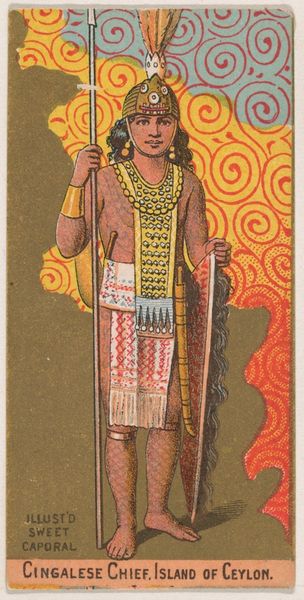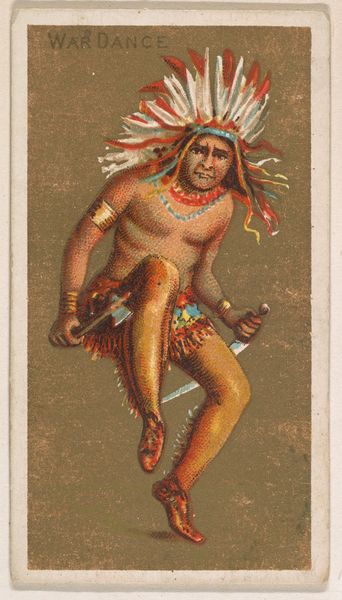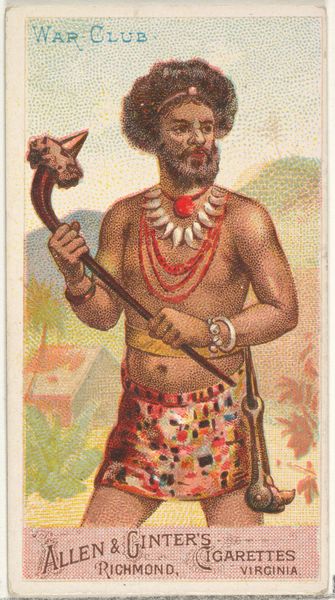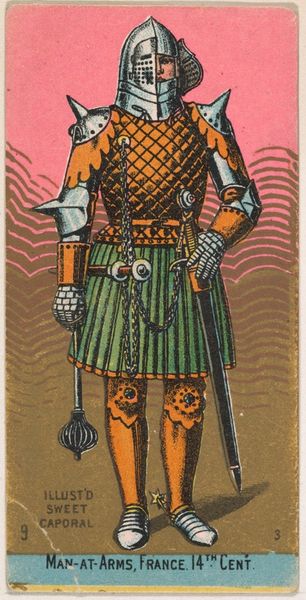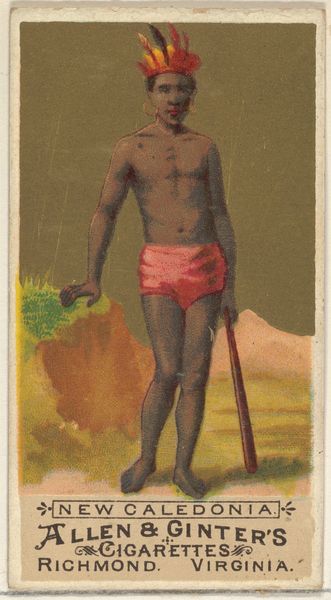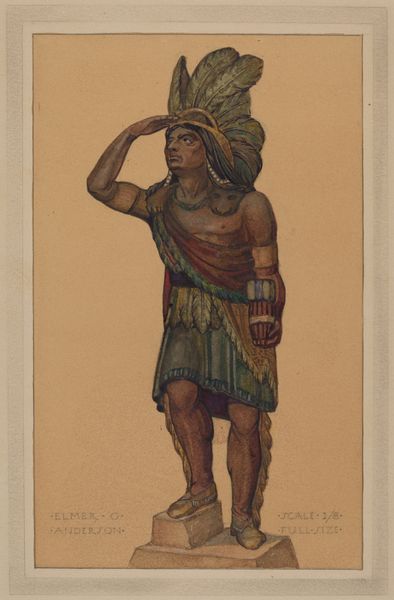
Warrior, Coast of Guinea, from the Military Series (N224) issued by Kinney Tobacco Company to promote Sweet Caporal Cigarettes 1888
0:00
0:00
#
portrait
#
african-art
# print
#
caricature
#
figuration
#
naive art
Dimensions: Sheet: 2 3/4 × 1 1/2 in. (7 × 3.8 cm)
Copyright: Public Domain
Curator: This is a chromolithograph from 1888 titled "Warrior, Coast of Guinea." It was produced by the Kinney Tobacco Company as part of their "Sweet Caporal Cigarettes" series. Editor: It's striking, visually. A flat, almost cartoonish rendering of a man, and the juxtaposition of his traditional attire with what appears to be a very modern rifle creates an immediate sense of… dissonance? Curator: Indeed. Kinney Tobacco Company issued these cards to promote their cigarettes, depicting different "exotic" military figures from around the world. Consider the industrial process: mass-produced lithographs circulated with a consumer good, tobacco. Editor: So, it’s a form of advertising, designed to sell cigarettes through an appeal to…adventure, exoticism? But it's also circulating an image of race and power. How does this imagery of a "Warrior" intersect with European colonial narratives about Africa? Curator: Precisely. It's steeped in the Orientalist aesthetic prevalent at the time, simplifying and essentializing the depicted individual into a type – "the African Warrior". But the materials are telling: Cheaply made prints in massive quantities shaped popular perceptions. The commodification of the image, then, played a crucial role in shaping those perceptions. The value lies not just in what it depicts but how it was manufactured and consumed. Editor: The choice of medium, the chromolithograph itself, is really doing some work here in forming the consumer’s idea of value and otherness. So, are we looking at how a capitalist, colonial mindset shaped artistic production and popular taste through this image? The tobacco company creating a collectible, tradeable item rooted in colonial imagery is quite telling about how race was produced and consumed in the 19th Century. Curator: Exactly. The materiality of the card connects to a global network of trade, labor, and power imbalances. Editor: Right, because the means of its production and distribution – the industrial printing, the tobacco trade – are inherently linked to colonial exploitation. I see the image of a proud figure, yet I’m aware of this insidious framework, and that shifts the initial reading of this striking figure considerably. Curator: Absolutely. This little card serves as a potent reminder of the material and political forces shaping our understanding of the world, and the legacy they leave. Editor: It really highlights how something as simple as a cigarette card can carry significant cultural and political weight. Thanks for illuminating those threads!
Comments
No comments
Be the first to comment and join the conversation on the ultimate creative platform.
